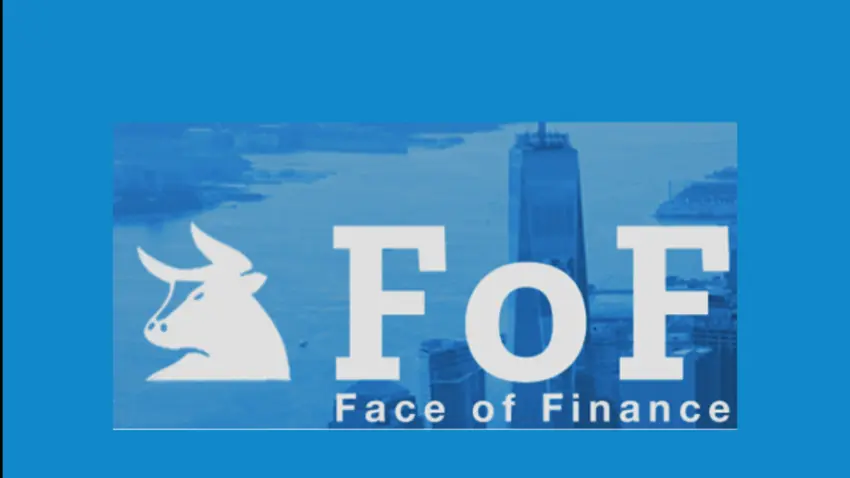On a cool afternoon in February Tom Tullis and I sat down to talk about UX and Finance. Tom’s done a great deal of work in UX and Financial Services and is well known and respected for his many contributions to the UX community including coauthoring two books and contributing over 70 publications to the field of UX. He recently retired as Vice President of User Experience Research at Fidelity Investments where he spent more than 20 years working on improving the User Experience.
He currently teaches classes in the Graduate UX Program at Bentley (MSHFID), and serves on the Boston Board of UXPA. I recently reached out to him and he generously agreed to sit down and talk with me. Tom and I hadn’t ever officially met so I was excited to hear what he had to say about UX and Finance. During our conversation he shared stories and anecdotes from his experience that spans over 40 years and graciously agreed to me sharing our conversation in the UXC blog.
HWK: Thank you again for spending the time. So to start, since I don’t know too much about how you got started, could you share how you got involved with UX in the financial services?
Tom Tullis: Sure, happy to be here. I’ve been in the general space of human factors or user experience for over 40 years now. I started my career at Bell Labs and then I worked for several different software companies until I got this phone call from a headhunter for Fidelity. At the time I was working for Canon and living out on the west coast. This was about 24 years ago now. I was impressed that back in 1993 Fidelity was paying attention to usability issues. They actually had already built a usability lab in Boston. I was hired to manage the group and to continue to grow the group - which we did.
HWK: How were things different back in 1993?
Tom Tullis: The interesting thing is that in 1993 the web didn't exist. So the main thing we were working on was the design of desktop applications for use by the Fidelity phone representatives because they were the ones who were taking the calls from the customers buying shares or moving money from one account to another. The functionality wasn’t in the hands of our customers at that point. Over the years the vast majority of the functionality that was just in the hands of the phone representatives migrated via the web to the hands of our customers. That was an interesting transition to make because in one case you're dealing with representatives, internal folks who are very financially and computer savvy, and in the other case you’re dealing with folks who are maybe not as financially or computer savvy. That meant doing a lot of research to learn more about who those customers were and also a lot of usability testing with them.
HWK: Once you began working in the financial space at fidelity, what about it did you find to be most interesting in terms of UX?
Tom Tullis: The thing that was most interesting to me was that even though it was all financial, the work was actually quite varied - people in many different life stages. Everything from those folks who are just starting out up through retirees. Some of the work that we did with retirees led us to start to focus more on accessibility issues - making sure that our Web sites and our services worked well for people with disabilities.
The other thing that that really got me interested in the work at Fidelity and kept me motivated was that finances are important to all of us. I kept seeing over and over that people don't understand money and finances very well. I was interested in helping people to try and understand, whatever their financial situation is, how they can make the most of it, and also how organizations, like Fidelity, can help people save for retirement. I’m semi-retired now because I don't have a day job anymore although I still teach here at Bentley. I feel like I'm in a position that I can do that now largely because of what I was able to learn about what I needed to do for my retirement savings from working in the financial Industry.
HWK: Speaking of retiring, you most recently held the position of Vice President of User Experience Research at Fidelity, so you have an interesting perspective on UX leadership within the financial sector. What would you say being a leader in UX in financial services requires?
Tom Tullis: The first thing that comes to mind is it requires the ability to identify good people to be working for you who are helping to facilitate what you want to make happen as well as the ability to find and select those folks - and then also the ability to grow those people. One of the realizations we came to finally at Fidelity was that there was a basic set of skills and knowledge that we were looking for: an eagerness and willingness to learn. We were also looking for a kind of spark. We were doing a whole lot of quantitative research, which was not very common in the field at the time, and still not really all that common. We knew that the people we hired could learn on the job. We had our processes and our way of doing things. We felt like we could teach the right people our methods.
HWK: What are some ways for UX professionals to contribute to the field?
Tom Tullis: I feel like it's important to contribute to our field. It’s really still a very new field. I encourage people to find a way to ask some questions slightly more generally when doing research. You still answer the question for a project, but at the same time, answer the question for related projects and maybe for our field in general. I always encourage people, whenever they can, to publish their findings. I set a goal for myself many years ago when I was just starting my career of publishing or presenting at a refereed conference at least once a year and for the most part have. It was largely because I felt like it helped me grow. I feel like it’s also part of my sense of wanting to give back and be part of the community. Community is a large reason that I'm currently on the UXPA Boston board.
HWK: People talk about artificial intelligence these days and I’m curious about your thoughts on it. If you could use AI in finance to solve one thing what would it be?
Tom Tullis: The first thing that came to mind when you mentioned that was a study that we did years ago at Fidelity before chatbots or virtual assistants became a thing. We did what's called a Wizard of Oz study. In this case participants were interacting with a virtual representative. Instead of having the fidelity.com homepage, we used just the virtual representative, computer based system that was trying to be a representative. When participants went to the home page it said ‘Welcome to Fidelity. What can I do for you today?’ It was not speaking interaction at the time, but text. This was a Wizard of Oz study where a person was entering the text. There was not a smart system behind it, but participants actually thought it was a real system and they all absolutely loved it. (We told participants at the end of the study how we were actually doing it). They felt like they could get answers to their questions that they felt like they could get the information that they wanted quickly and easily and without having to navigate through a bunch of menus and so forth.
At the time that technology really didn't exist yet. We were trying to find out is this [virtual rep] was a direction we should try to be going. It seemed very promising. I still do feel like AI can be used in that sort of navigational type use. Last I heard Fidelity.com has 35,000 pages on it so it can be like finding the needle in the haystack and AI is something that could really help. Obviously search has gotten better and better over years and maybe that's all it is, but I felt like the dialogue that you could have back and forth where the virtual agent would retain context and could say, ‘ok, well yeah, that's sort of what I'm looking for, but I'm actually looking for this variation of it.’ could be helpful.
Beyond that, it's going to be a really tough problem, but maybe a useful one, to try to tackle for AI that knows a lot about somebody’s situation: their financial situation, their age, their job. Knowing all the financial related stuff and then providing some advice of what they should be doing has potential. Advice for that 22 year old who's just starting out and trying to decide, do I pay off my college loan? or Do I put money toward a 401k? Helping with those kinds of tradeoffs - maybe AI could eventually get there.
HWK: What you would say are the top two things you think people working in finance need to know about UX, and then vice versa: what are two things people working in UX need to know about finances?
Tom Tullis: I think a lot of people working in finance think that their customers are like them and the vast majority are not. That's where I think people working in finance need to understand that UX is a way of helping them really understand who their customers are and what they are able to deal with effectively. At Fidelity we would have the project team observing the usability test session in the lab and we would be bringing in all of these customers in the sessions and the project leader or somebody else would say ‘you know that person wasn't representative of customers. Our customers know more than that.’ And this would happen participant after participant until finally by the end of the day the project teams would realize that the participants really did meet the screening criteria and really were representative of their customers. That was really great in helping to open their eyes.
HWK: What about the other side - the UX folks - what do they need to know about finance?
Tom Tullis: I've always thought that it's an ongoing question as to how much subject matter expertise you need to have in order to do good UX work. I definitely think you need to have some. You don't have to be an expert. You need to be able to know how to learn what the experts need. I don't think it's either one extreme or the other. I've definitely talked to people who said they don't care what the subject matter is and that they can do a good usability test with essentially knowing nothing about a subject. I don't agree with that. You need to know the basics of what's going on. I don't think you need to be the expert. Being willing to just dig in and learn this stuff. Learn what Asset allocation is. Learn why you need to change your asset allocation as you get older. Just fairly basic stuff like that. For example, I'm not an active trader but I worked a little bit with some active traders and they have this crazy terminology that they have for certain kinds of trades like a ‘butterfly spread’. That’s an example of something where it's at an extreme, that you don't have to be the expert.
HWK: We’re just about out of time. Anything else you’d like to mention?
Tom Tullis: The main thing to me is that money and finances are something that everybody has to deal with. In the UX field we have an obligation to help people understand their finances better so that they can make good decisions. I’ve talked to a lot of people in this field and one of the main reasons they say that they’re in this field is that they really feel like they’re making it better for people dealing with their finances and helping make it so that people can understand their finances better.
HWK: Well put, it is important work that makes a difference. Thank you so much for stopping by the UXC today. I appreciate you taking time to talk!

Tom was formerly the Vice President of User Research at Fidelity Investments where he spent more than 20 years working on improving the User Experience. He taught classes in the Graduate UX Program at Bentley (MSHFID), and served on the Boston Board of UXPA. He's known and well respected for his many contributions to the UX community including coauthoring two books and contributing over 70 publications to the field of UX over the last 40 years.

Heather would like to thank Tom Tullis for taking the time to speak with her for this interview and for his valuable contributions to the UX community. She is happy to have the opportunity to share this conversation with the UX community by way of the UXC blog. She utilizes a variety of formative and summative methods in her research and design work at the Bentley User Experience Center. Look for her on twitter @uxheat or connect with her on LinkedIn
Let's start a conversation
Get in touch to learn more about Bentley UX consulting services and how we can help your organization.





